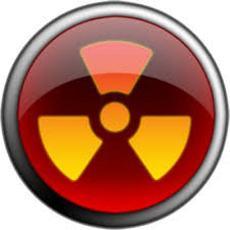NUCLEAR ENERGY
NUCLEAR ENERGY
 FROM JOANATHAN SYMONS (Macquarie Unversity, Australia)
FROM JOANATHAN SYMONS (Macquarie Unversity, Australia)
24 Aug 2014
Dear Joe,
Congratulations on the wonderful website - it's a great resource.
I've been meaning to ask you a question about your attitude to nuclear power for some time. As I'm sure you are aware, quite a few environmentalists (such as George Monbiot and James Hansen) have recently argued, reluctantly, for the necessity of expanding the use of nuclear power as part of the global response to climate change (maybe less necessary in Australia than some other places).
I was wondering if your views on this topic have changed as the climate crisis has become more apparent.
See the article “Prevented Mortality and Greenhouse Gas Emissions from Historical and Projected Nuclear Power’ by Pushker A. Kharecha and James E. Hansen:
http://pubs.acs.org/doi/abs/10.1021/es3051197?source=cen
Cheers
Jon
______________________________
FROM JOSEPH CAMILLERI
Dear Jon,
You pose a critically important question that has exercised my mind over recent years.
My view of the role of nuclear energy remains essentially unchanged.
I readily accept that when I took up the campaign against nculear power expansion back in 1975 we had little inkling of the grave dangers posed by our carbon footprint. And you are right to say that a few noted environmentalists have come to see nuclear energy as a useful step in the transition to a low carbon economy.
I regard this view as deeply flawed. May I explain in shorthand:
1. It is a shortsighted strategy to try and solve a problem by creating or exacerbating another one. The risks posed by nuclear energy to human health, the environment, and global security remain as severe as they have ever been.
2. Significantly, the worst reactor accidents have occurred in the industrialised world. We need only think of Windscale, Three Mile Island, Chernobyl and Fuskushima - some 30 other serious accidents are known to have occurred over the past 50 years.
3. To this record must be added the future risk of sabotage or terrorist attacks on nuclear power plants and the risk that nuclear materials will be stolen and used to create nuclear devices, which, however primitive, could unleash untold devastation.
4. The handling of spent nuclear fuel still presents daunting waste disposal problems - both technical and political. Despite numerous technical fixes proposed at different times, no country has yet implemented a permanent disposal system for the most hazardous radioactive waste: intermediate-level and high-level waste.
5. Perhaps the most worrying threat is that of nuclear proliferation. It is a sobering thought that in Iraq the United States embarked on a ruinous military expedition in 2003, the horrendous efects of which will be felt for years to come, precisely because it feared that nuclear materials could be diverted to miltiary purposes. Israel has made exactly the same argument in relation to Iran's nculear program. North Korea offers yet another example. It is not just that this or that country may decide to use the subterfuge of a civilian nuclear program to disguise its true military ambitions, but that regional or great powers may point to such a threat, real, imagined or contrived, to justify a military strike, which as the decade old Iraq war has shown can have devastating consequences.
6. The magnitude of the risks involved is matched only by the high costs of nuclear energy. Over the last sxity years the nuclear industry has benefited from massive public subsidies. Governments have funded hugely expensive research and development programs; provided capital subsidies towards construction, financing and decommissioning costs; covered many of the costs associated with the management of uranium stockpiles and enrichment processes; accepted at least partial liability for nuclear accidents; borne the brunt of waste-management risks; and carried virtually the entire cost of the global non-proliferation effort. If fully calculated across all countries these historical public subsidies which continue to this day may exceed $1,000 billion. Yet, for all this support, the nuclear industry has stuggled to be competitive.
There is no surprise therefore in the failure of the industry to achieve the growth projections tenaciouly but unrealistically envisaged by its proponents. Eelctricity generation at US nuclear power plants is now falling. Having plateaued between 2007 and 2010, it has been steadily declining since. With reactors retiring early and proposed projects being abandoned, many consider nuclear power’s days in the United states to be numbered.
Though the factors at work vary from country to country, much the same picture emerges in many parts of Western Europe and Japan. In Germany nuclear peaked in 2001 at 171.3 TWh. Over the last seven years it has declined sharply and in 2013 stood at 97.3 TWh. In Japan the Fukushima disaster of March 2011 left only two of the 50 existing units offically in operation. It is now doubtful whether even half the other 48 will ever restart.
In 2012, annual nuclear generation worldwide fell by 7%, that is, 12% below its historic maximum achieved in 2006.
Of the 66 reactors under construction worldwide, two-thirds are located in just three countries – China, India, and Russia – with China alone accounting for 28. Many of these have been “under construction” for well over a decade. In the meantime the average age of the world’s reactor fleet stands at 28 years, and continues to increase steadily.
Given high risks, high costs and a disappointing performance over many decades, nuclear inspires little confidence in the future. Supporting the rapid introduction of renewable technologies, developing a wide-ranging program of energy efficiency measures, and rethinking our existing patterns of energy consumption offer a far more promising pathway for dealing with climate change.
I look forward to further contributions on this subject.
Regards.
Joe
